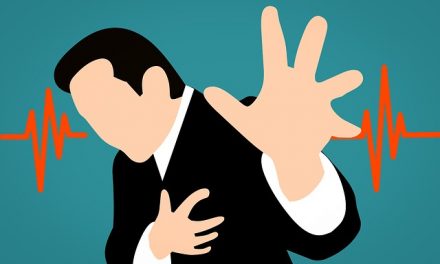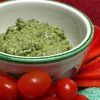Even though she was about 15 pounds overweight, the woman indulged in her favorite fatty foods with gusto, consuming fried chicken, french fries, and topping it off with a hot fudge sundae. By 3 a.m., she regretted her actions, awakening with indigestion and a sharp, stabbing pain in the upper right quarter of her abdomen. The pain continued for hours, spreading to her shoulders, slowly ebbing away by the next afternoon.
Since the symptoms had abated and no one else in the family became ill, the woman forgot her experience--until a few weeks later. This time the seeming culprit was a pizza binge, another fatty meal. The unrelenting, severe abdominal pain returned. Finally, the woman went to her doctor, who immediately suspected a gallbladder problem.
Although this woman is a composite of several gallstone patients, her experiences are fairly typical. She was not one of the 10 percent of patients whose gallstones contain calcium, which makes them visible on a standard x-ray. So she was given a tablet containing a radiopaque dye the night before undergoing a special x-ray called an oral cholecystogram. The dye outlined her gallbladder and individual stones within it. Had the dye not shown up at all, it would have meant that her gallbladder was packed full with stones. An ultrasound scan confirmed the presence of stones.
The diagnosis: acute cholecystitis. The tube leading from her gallbladder to her small intestine was blocked by a cholesterol stone. Pressure was building in her gallbladder, alerting the immune system to send in the white blood cells and biochemicals of an inflammatory response.
Although she was in intense pain, the woman would soon be helped by recent developments that make treating a diseased gallbladder easier than ever.
The Gallbladder
The gallbladder is a small, muscular, pear-shaped sac nestled in a depression on the right underside of the liver. It holds about a quarter of a cup of a yellowish-green, pasty material called bile. Bile contains water, bile salts and acids, pigments, cholesterol, phospholipids (a type of fat molecule), and electrolytes (electrically charged fluids). Bile tastes bitter, and this is why the word "bile" has come to denote bitterness. Bile breaks up, or emulsifies, large globs of fat into smaller globs in the small intestine, a first step in fat digestion.
The gallbladder is a storage stop between the liver and the small intestine. It fills with viscous bile, thickening it, until a hormone released after eating signals the gallbladder to squirt out its colorful contents.
A healthy gallbladder keeps bile moving in several ways. The inner lining, called the mucosa, secretes hydrogen ions into the gallbladder contents. This maintains an acidic environment, necessary to keep calcium from precipitating (coming out of solution as solid particles). As food is digested, water and electrolytes pour into the area, continually diluting and washing out the bile. Finally, bile salts latch onto cholesterol molecules, keeping them in solution.
Stone Formation
Should any of these biological balances backfire, the sludge-like gallbladder contents can crystallize. A stone forms when a speck of calcium becomes coated with either cholesterol or the pigment bilirubin. Bilirubin comes from the blood's oxygen-carrying molecule, hemoglobin. The brownish-black color of pigment stones is due to bilirubin, much as a vibrantly-hued bruise appears as blood spreads beneath the skin.
While pigment stones are small, dark, and relatively rare, cholesterol stones are crystalline and waxy, can grow quite large, and may accumulate in the hundreds. Many stones are mixed, with pigment on the inside, wrapped in a cholesterol coat.
About half of people with gallbladder stones do not even know that they have them. Painless stones probably float freely in the gallbladder. Pain results when a stone is small enough to pass through and lodge in either the cystic duct leading from the gallbladder, or farther along in the common bile duct, which is shared by the gallbladder and the liver and leads to the small intestine. In fact, one large stone trapped in the gallbladder is not as likely to cause pain as are several small stones that can escape.
The type and severity of symptoms depend upon where stones lodge. A stone stuck in the lower common bile duct results in jaundice (yellowing of the skin and whites of the eyes, due to bilirubin accumulation) and may cause pancreatitis, because a conduit from the pancreas joins the common bile duct. The pancreas' digestive enzymes, which normally go to the small intestine, become trapped in this essential gland, destroying it.
A stone trapped in the neck of the gallbladder causes acute cholecystitis. A milder condition is chronic recurrent acute cholecystitis, characterized by intermittent pain of shorter duration and less intensity.
In the most severe scenario, pressure builds so much that the gallbladder bursts, sending bile into the abdominal cavity. Pus accumulates, bacteria move in, and the infected bile may lead to peritonitis, a severe infection of the abdominal cavity. But this is very rare because a gallbladder is usually removed before disease can progress this far.
Who Gets Gallstones?
Although gallstones are a very common medical problem, we know very little about why some people develop them and some do not. We do know that women are twice as likely to have gallbladder problems as men.
Women may owe their higher risk of gallbladder disease to hormones. The female hormone estrogen is known to increase the rate of lipid (fat) synthesis, use and excretion, while at the same time calming gallbladder movements that would mix up the contents. Pregnancy raises risk by altering the chemical composition of bile to favor stone formation and decreasing the contractability of the gallbladder. Birth control pills containing estrogen increase the cholesterol content of bile, and seem to heighten the risk of gallbladder disease in women under 29 who have taken them for less than 5 years.
Studies indicate that gallstones are more prevalent in some populations than others, but it is difficult to tell whether this is due to heredity or environmental factors. For example, gallstones are common in the United States (with 20 million sufferers) and Great Britain (with 100,000 affected) and have the highest incidence in Sweden, where 44 percent of the population is affected. Yet gallstones are very rare in Africa and Asia.
But does prevalent gallbladder disease reflect a particular diet, or genetic similarity among the people? It's hard to say.
The fact that the rate of gallbladder disease is high in cultures with high-fat, low-fiber diets and low in cultures with high-fiber, low-fat diets suggests a nutritional influence. In addition, people who move from the high-fiber, low-fat areas to high-fat, low-fiber areas soon develop more gallbladder disease. For example, East Asians moving to the United States and adopting our fattier diet show a sixfold increase in gallbladder problems within a single generation.
On the other hand, certain population groups, most notably Native Americans, have a high incidence of gallbladder disease, leading scientists to suspect a hereditary factor. About 80 percent of the Pima Indians of southern Arizona develop gallstones by age 35. Numbers are also high among the Navajos of the southwestern states, the Chippewas of northern Minnesota, the Micmacs of Nova Scotia, Alaskan tribes, and especially the Araucanian Indians of Chile. Another genetic link is the association of pigment gallstones with sickle cell disease, an inherited anemia most common in blacks.
The Role of Diet
Since the gallbladder is part of the digestive system, it seems logical that its health would depend, at least in part, on what one eats. Establishing a dietary cause of gallbladder disease is difficult.
Still, some clinical studies track interesting trends. A group of Boston researchers led by K. Malcolm MacLure, Sc.D., of the Harvard School of Public Health, and Walter C. Willett, M.D., of Harvard Medical School, followed 88,837 women between the ages of 34 and 59 who had filled out a detailed dietary questionnaire in 1980. By 1984, 433 had had their gallbladders removed, and 179 had stones not yet treated. What, if anything, did these women have or do that the others didn't? Weight.
"Overall, we observed a roughly linear relation between relative weight and the risk of gallstones," write the researchers in the Aug. 31, 1989, issue of the New England Journal of Medicine. They warn that even moderate overweight can raise the risk, estimating that the very obese face a sixfold higher risk, and the slightly overweight a 1.7-fold increase in risk.
A team led by Harris Pastides, Ph.D., of the University of Massachusetts School of Public Health in Amherst, compared the diets of 84 female and 16 male gallbladder patients admitted consecutively to a hospital in Athens, Greece, to accident victims without gallbladder problems. They conclude in the July 1990 Archives of Internal Medicine, "Our findings suggest that there is a rather strong association between frequent consumption of starchy food items such as breads, pasta, rice, and potatoes with risk of gallbladder disease in women. Furthermore, a modest protective effect was observed among women reporting relatively high consumption of vegetables of all kinds." They recommend that overweight women with starchy diets try to include more vegetables.
But the diet-gallbladder link, if indeed there is one, is far from clear. Consider a class action suit being filed against a popular dietary plan. "Last spring, according to newspaper reports, 19 people filed suit against NutriSystem for developing gallbladder disease after the diet," says Carol Heppe, a consumer safety officer at the Food and Drug Administration. But would they have become ill anyway? There is no ready answer.
For women, common risk factors for developing the disease include age, weight, and number of children. Among obese women between 20 and 30 years of age, the risk is six times greater than that for women of normal weight. By age 60, almost one-third of obese women can expect to develop gallbladder disease.
Drug Treatment
Drug treatment to dissolve gallstones began about 20 years ago, when researchers found that a deficiency of bile salts enabled cholesterol to crystallize out of solution and form stones. Today, drugs are typically given for small stones or if a person cannot tolerate surgery.
The two approved cholesterol gallstone dissolution drugs are the natural bile constituents chenodeoxycholic acid (Chenix) and its chemical non-identical twin ursodeoxycholic acid (Actigall).
"These drugs can change the cholesterol saturation in the gallbladder and permit cholesterol in the stone to go into solution, so that it dissolves," says Stephen Fredd, M.D., director of FDA's division of gastrointestinal and coagulation drug products at FDA. "Ursodeoxycholic acid is less likely to be toxic to the liver, but is more expensive."
But the drugs have major drawbacks. "In 50 percent of patients, stones recur within 5 years of drug treatment," explains Fredd. "A common side effect of these drugs is diarrhea. The drugs work slowly and must be taken daily for a long time and, even then, are not always effective. About 12 percent of patients improve after six months, and up to 50 percent show improvement by a year. The cost of drug treatment is about $1,200 a year.
A new investigational drug is methyl-tert-butyl-ether. It works fast on cholesterol stones, dissolving them in 24 to 48 hours, but administering the drug is an invasive procedure.
"It is not taken orally," explains Fredd. "It is put in the gallbladder by a catheter through the liver to the gallbladder. This is not minor stuff, but in expert hands, it can be done safely. But it has dangerous propensities. It is an ether, and can put you to sleep. It can irritate the intestines."
Another new drug is mono-octanoin (Moctanin), which is approved only to treat stones lodged in the common bile duct. This sometimes happens after the gallbladder is removed and small stones migrate into the duct.
Shock Wave Lithotripsy
Shock wave lithotripsy, a noninvasive procedure that FDA approved for treating kidney stones in 1985, seemed to hold great promise for treating gallstones as well. (To treat kidney stones, the torso of the anesthetized but conscious patient is immobilized and lowered into a large tub of water, where x-rays are used to locate the stone and position the patient properly. In a procedure lasting one to two hours, the kidney stones are then crushed, without harming bone or soft tissue, by repeated shock waves from a generator at the bottom of the tub.)
"At the outset we thought, gee, it'll be great for gallstones, too. But gallstones turned out to be a whole different animal," says FDA's Mark Kramer, chief of the office of device evaluation's gastroenterology/urology branch I.
Not only are gallbladder stones chemically different from kidney stones, but kidney stones are easier to pass once shattered because urine forms in the kidney and collects in the bladder all the time. In contrast, the gallbladder squirts only intermittently, and may not contract and expand enough in patients who form stones for the stones to be passed. As a result, gallstone dissolution drugs usually must be taken along with the lithotripsy treatment. Based on the clinical data available, lithotripsy for gallstones may only work for 10 to 15 percent of sufferers, Kramer says, and it is not yet known which types of patients would benefit more from it than from drugs or surgery.
Surgery
Cholecystectomy--gallbladder removal--is the most common elective abdominal operation in western nations. Before the procedure was perfected a century ago, the cholecystostomies performed only removed the stones--which came back. Researchers then realized they had to remove the stones plus their pouch, the gallbladder. In a classical cholecystectomy, the surgeon removes the gallbladder through a 5- to 8-inch incision. The duct from the liver is then attached directly to the small intestine. Afterwards, a steady trickle of less concentrated bile is sent to the small intestine. In most cases, life returns to normal.
Cholecystectomy costs from $6,000 to $10,000, and requires a five to seven day hospital stay. The patient needs about a month to fully recover. Considering the invasiveness of the procedure, and that symptoms are often intermittent or even nonexistent, it is not surprising that the operation is declining in popularity. In 1975, 600,000 cholecystectomies were performed in the United States; by 1989, the number had dropped to 475,000.
A new surgical procedure, laparoscopic laser cholecystectomy (LLC, popularly known as "keyhole laser surgery"), is an alternative to conventional cholecystectomy. It is fast, effective, and far less invasive. A typical hospital stay is 36 hours or less, with return to normal activities within a week.
LLC requires four incisions: two half-inch-long cuts and two quarter-inch-long cuts. The laser energy is delivered along a tiny flexible quartz fiber through one of the larger openings, and is focused on a sapphire scalpel, which directly contacts the tissue. The scalpel channels the energy, minimizing damage to nearby tissue. A miniature TV camera is threaded through a tube called a laparoscope inserted in the second large hole. The two smaller holes permit entry of surgical instruments. The procedure can be performed by one or two surgeons.
Postoperative pain, if any, can be controlled with over-the-counter painkillers rather than the narcotics often needed following traditional cholecystectomy. This latest "band aid" surgery (so-called because it requires tiny incisions) promises to be particularly beneficial for the elderly.
"Older people often cough more frequently than others, and in the past, they have suffered badly with a large abdominal incision," says Phillip Rosett, M.D., who performs LLC at Thorek Hospital in Chicago.
"With the bigger incisions [of traditional gallbladder removal], older patients have a greater risk of developing pneumonia. They also have greater difficulty getting out of bed. It usually takes 24 hours before they can move from the bed to a chair and close to another 24 hours to start walking again. However, with LLC, my patients are up and walking the same afternoon, and they walk out of the hospital the following morning," he adds.
It's nice to know that gallbladder disease is one problem for which treatment is becoming both simpler and more successful. Although the answers aren't all in on what causes gallbladder disease, it couldn't hurt to follow the advice of the American Heart Association and the National Cancer Institute and add more fiber to our diets and cut back on fat.
Ricki Lewis teaches biology at the State University of New York at Albany and is the author of Beginnings of Life. This article appears courtesy of the FDA.









